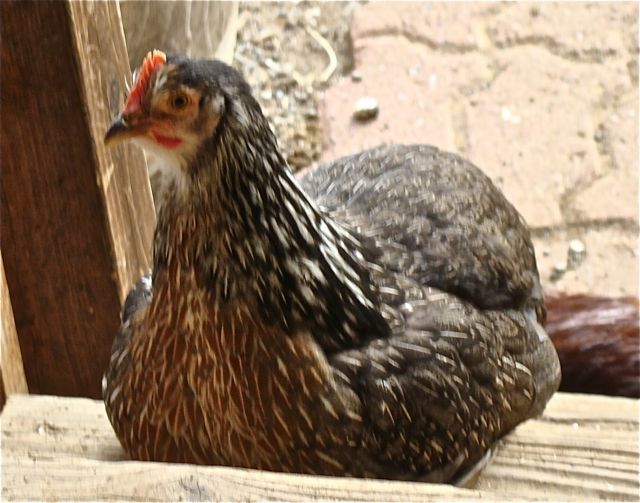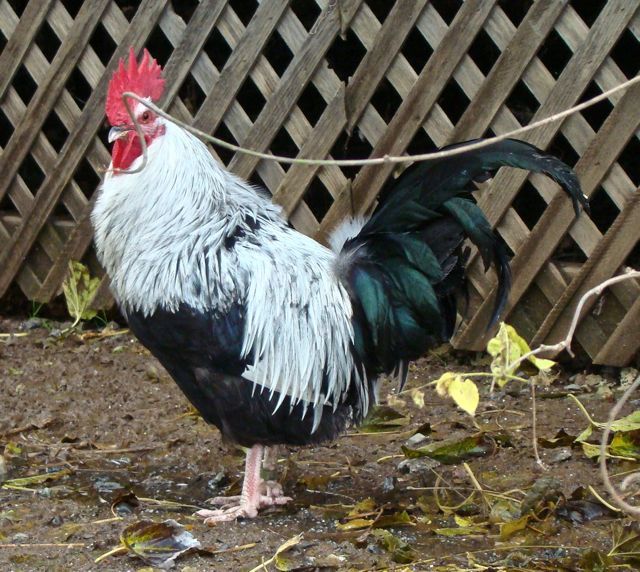Nice pic's, Dave. I thin that the male in the trio phot exhibits much of what is wanted in a cock bird, possessing that rick golden hue in hackle and saddle. It does seem that many, even most, photos I've seen of "coloreds" display males that are very light. Of the three photos that you posted (and working strictly from memory as I don't have my Standard with) the last one seems to be a fairly strong female. In my mind, a female colored is essentially black with golden shafting. I don't believe that there is supposed to be stippling. The breast is a dark salmon, the hackle is dark female duckwing style. As seen in the second photo of the backwards facing cock in the pen of hens, I think the the overall problem with colored females is that there is often stippling in feathers that are supposed to be solid black with shafting being the only color. i wouldn't be surprised if your theory of crossing in Reds is accurate, which might be opening up the problem of overly abundant stippling.
Colored females seem to be a constant source of challenge. If I were to undertake coloreds, I'd want to do they exclusively. I'd want to start with two or three strong trios or three or four strong pairs. I'd then hatch like the dickens.





